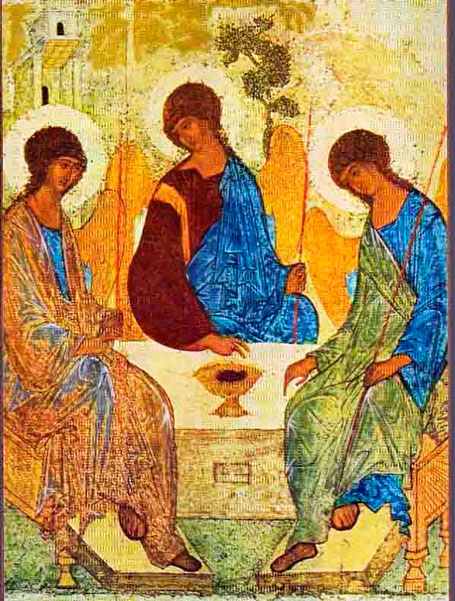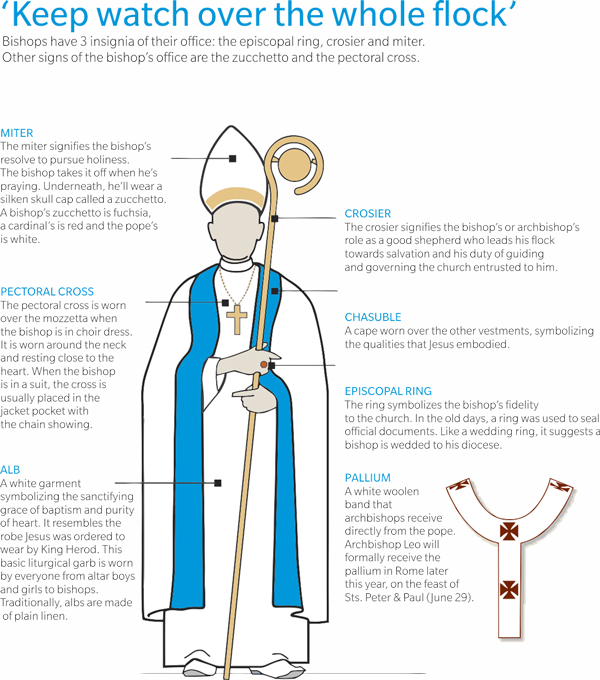
The Trinity is most commonly seen in Christian art with the Spirit represented by a dove, as specified in the Gospel accounts of the Baptism of Christ; he is nearly always shown with wings outspread. However depictions using three human figures appear occasionally in most periods of art.
The Father and the Son are usually differentiated by age, and later by dress, but this too is not always the case. The usual depiction of the Father as an older man with a white beard may derive from the biblical Ancient of Days, which is often cited in defense of this sometimes controversial representation.
The Son is often shown at the Father’s right hand.[Acts 7:56 ] He may be represented by a symbol—typically the Lamb or a cross—or on a crucifix, so that the Father is the only human figure shown at full size. In early medieval art, the Father may be represented by a hand appearing from a cloud in a blessing gesture, for example in scenes of the Baptism of Christ.

Later, in the West, the Throne of Mercy (or “Throne of Grace”) became a common depiction. In this style, the Father (sometimes seated on a throne) is shown supporting either a crucifix[111] or, later, a slumped crucified Son, similar to the Pietà (this type is distinguished in German as the Not Gottes)[112] in his outstretched arms, while the Dove hovers above or in between them. This subject continued to be popular until the 18th century at least.

By the end of the 15th century, larger representations, other than the Throne of Mercy, became effectively standardised, showing an older figure in plain robes for the Father, Christ with his torso partly bare to display the wounds of his Passion, and the dove above or around them. In earlier representations both Father, especially, and Son often wear elaborate robes and crowns. Sometimes the Father alone wears a crown, or even a papal tiara.

In the 17th century there was also a brief vogue for representing the Trinity as three identical men (example), conceivably influenced by Hospitality of Abraham images. This period coincided with the Spanish ascendancy in Latin America and the Philipines, so examples can be found in older churches in those areas. One odd example represents the Trinity this way in an image of the Coronation of Mary.

Soon, however, this type of Trinity image was condemned and supplanted by one in which the Father is represented as an older person, the Son as a younger one seated at his right and shouldering a large cross, and the Holy Spirit as a dove that hovers above the space between them. In the latter type the Spirit is represented as casting light upon the other two persons (symbolically, making it possible for humans to know them), but in one unusual variant he emanates from both their mouths simultaneously, a reference to the Latin trinitarian theology in which the Spirit “proceeds from the Father and the Son” (a phrase from the Roman Catholic text of the Nicene Creed that reads simply “proceeds from the Father” in the Orthodox and Anglican versions).





